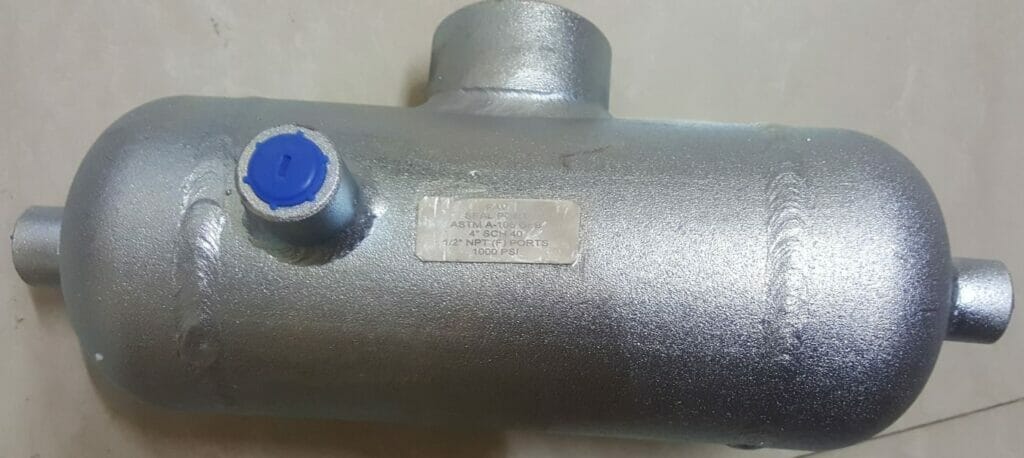Have you ever wondered how mechanical seal pots keep your equipment running smoothly? In this comprehensive guide, we’ll dive into the inner workings of these essential components. By the end of this post, you’ll have a clear understanding of how mechanical seal pots function and why they are crucial for maintaining the integrity of your machinery.

What is Seal Pot
A seal pot, also known as a seal reservoir or seal flush pot, is an essential component in mechanical seal systems. It serves as a reservoir that holds a barrier fluid, which is typically a clean, compatible liquid used to protect and lubricate the mechanical seal.
How Does Mechanical Seal Pot Work
The seal pot operates by circulating a barrier fluid, typically a clean, compatible liquid, between the mechanical seal faces. The barrier fluid lubricates and cools the seal faces, preventing direct contact between them.
The barrier fluid is pressurized to a level higher than the process fluid pressure in the pump. This positive pressure differential ensures that any leakage between the seal faces will be from the clean barrier fluid into the process, rather than process fluid leaking into the atmosphere.
Circulation of the barrier fluid is maintained by the pumping action of the rotating seal components, such as the springs and compression rings. As the shaft rotates, these components create a pumping effect, causing the barrier fluid to flow between the seal faces.
What Is the Purpose of a Seal Pot
- Provides a clean, compatible barrier fluid to the mechanical seal: The seal pot contains a barrier fluid that is circulated through the seal chamber, lubricating and cooling the seal faces, and preventing process fluid from entering the seal chamber.
- Maintains a constant pressure on the mechanical seal: The seal pot ensures that the barrier fluid pressure is consistently higher than the process fluid pressure, preventing process fluid from leaking past the seal faces and into the atmosphere.
- Allows for monitoring of seal performance: Seal pots are typically equipped with level gauges, pressure gauges, and temperature sensors, enabling operators to monitor the condition of the mechanical seal and detect any anomalies or potential failures.
- Facilitates seal maintenance and replacement: The seal pot can be isolated from the process fluid, allowing for easier maintenance and replacement of the mechanical seal without the need to drain or depressurize the entire system.
- Enhances safety and environmental compliance: By preventing process fluid leakage, the seal pot helps minimize the risk of environmental contamination, personnel exposure to hazardous materials, and fire or explosion hazards in certain applications.
Components of Seal Pot
- Reservoir: The main body of the seal pot, holding the barrier fluid. Made from materials like stainless steel, carbon steel, or engineered plastics compatible with the process and barrier fluids.
- Level Gauge: Installed on the seal pot to monitor the barrier fluid level, ensuring an adequate amount for proper mechanical seal operation.
- Pressure Gauge: Used to monitor the pressure inside the seal pot. Maintaining a higher pressure than the process fluid is crucial for preventing contamination and ensuring optimal seal performance.
- Fill Port and Drain Valve: The fill port allows for adding barrier fluid, while the drain valve facilitates fluid removal for maintenance or replacement.
- Cooling Coils (Optional): Installed in some applications to help dissipate heat generated by the mechanical seal, particularly in high-temperature applications or when the barrier fluid has limited heat transfer properties.
FAQs
What fluids can be used in a mechanical seal pot?
Various fluids can be used, including water, glycol, and oil, depending on the application and the mechanical seal’s requirements.
How often should the fluid in a mechanical seal pot be replaced?
The fluid replacement frequency depends on the application and fluid type, but it is generally recommended to replace the fluid every 6 to 12 months.
Can a mechanical seal pot be used with any type of mechanical seal?
Most mechanical seal pots are designed to work with a wide range of mechanical seals, but it is essential to ensure compatibility with your specific seal type.
In conclusion
Mechanical seal pots are essential for maintaining the integrity and performance of mechanical seals. By understanding how they work, you can ensure optimal performance and longevity of your sealing system. For more information on selecting the right seal pot for your application, consult with a trusted seal manufacturer.


